Kayaking and rowing involve a watercraft, a paddle or oar to power the craft, and water to enjoy the sport, but the differences stop there.
Here we will compare kayaking vs rowing, looking at the pros and cons and various aspects of each.
Definition of Rowing
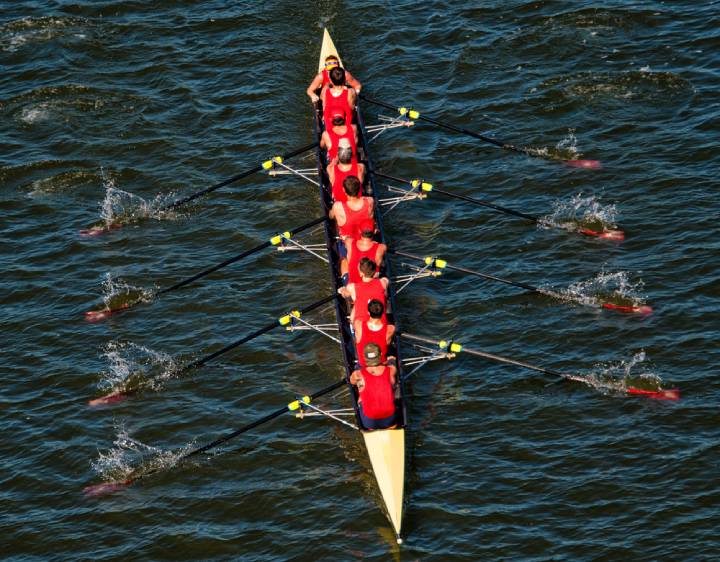
Rowing is a sport that dates back to the 16th century. It is associated with crew rowing, where an eight-person team of sculls or shells uses two to eight oars to power the rowboat.
Rowing is a very competitive sport and is part of the summer Olympic events for both men and women.
Rowing Pros
- Creates teamwork within a team of eight rowers
- You can practice your rowing skills using a rowing machine on land
- Rowboats are easy to steer
- Faster than a kayak
Rowing Cons
- Harder to transport
Definition of Kayaking
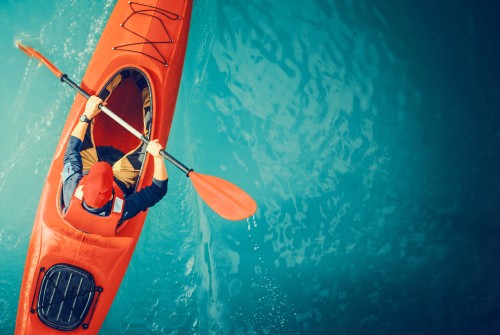
Kayaking is a recreational sport done in a single paddle kayak (with a T-shaped oar) or a tandem (two-person) kayak with two paddles.
The kayakers do the paddling with a paddle that is handheld, double-bladed and lightweight.
Most kayakers prefer warmer weather and calm waters, but the more adventurous kayakers prefer whitewater rapids and waterfalls!
Kayaking Pros
- Offers solo trips and adventurous outings
- Your chances of being safe if the kayak capsizes are better than in a rowboat
- A great way to travel a long distance
- You can keep your belongings dry in the kayak
- Easier to transport than a rowboat
Kayaking Cons
- Less storage on a kayak vs. a rowboat
Kayaking vs Rowing
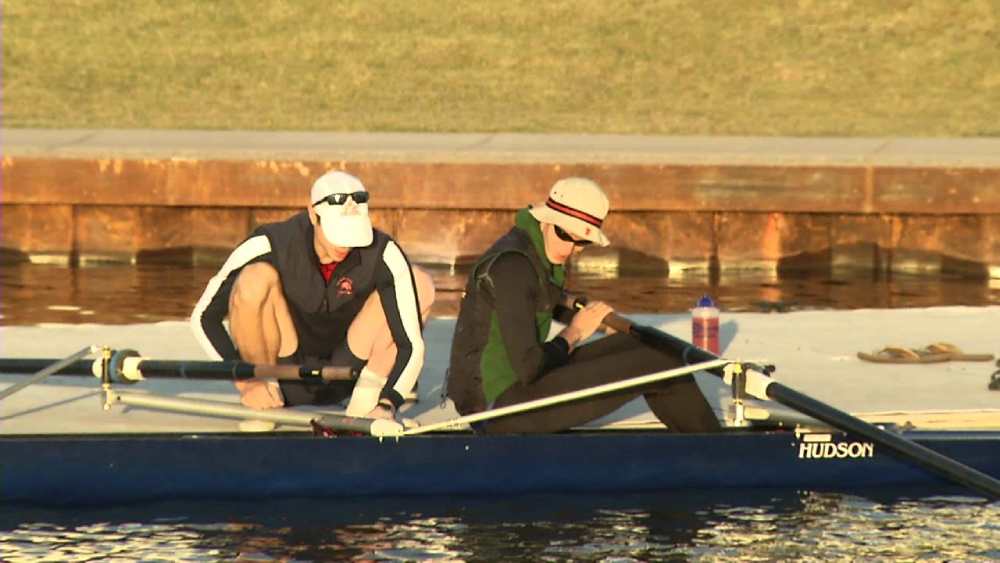
1. Seats
Kayaking
Kayak seats differ from kayak to kayak, but they are all fixed.
Rowing
When you row, the seat goes back and forth with the movement of your body going back and forth.
2. Boat Design
Kayaking
Kayaks are usually wider and not as long as a rowboat, but longer, slender models are made to make long-distance paddling easier.
Rowing
A Rowboat’s design is long and skinny to move quickly for speed and racing.
3. Paddles or Oars
Kayak
When kayaking, you use a long-handled paddle with a flat blade or blades on one side. You hold the paddle in both hands in a way that lets it fall if you let go of it.
Rowing
While rowing, you are using an oar with long handles and a flat blade on one end. The rower is holding one oar in each hand that is held in place by the oarlock.
4. Strokes
When using the paddle to stroke the water while kayaking, you paddle on the side of the kayak you want to turn. For example, you will paddle on the kayak’s left side if you turn left. A turn also requires you to edge (shift) your weight in the direction you want to turn.
If you are rowing, you use the oar on the side you wish to turn to row, with the pressure on the oar you are using as a rudder, as you hold the blade on the square of the opposite side.
Usually, one rower is designated as the rudder who uses the floor pedals in a team competition.
5. Number of Rowers
Kayaking is a solitary sport unless you are in a tandem kayak, then you will have two people who can paddle as opposed to the one paddler in a single-man kayak.
Rowing a team of eight, there will be eight rowers. If the rowers are sculling, each team member has an oar in each hand. If Sweep rowing, there is one oar per rower.
6. Rowing Positions
Kayaking
When kayaking, you are facing the direction you are paddling.
Rowing
Rowers are seated away from the direction they are rowing in. The lead in the boat is the coxswain who shouts out orders, so the rower knows how to row.
7. Muscle Strain
Kayaking
Muscle strain in the arms, back, and shoulders is most common. In addition, if paddling in high winds, it is possible to strain abdominal and thigh muscles.
Rowing
Rowing can strain the upper and lower body, back, and abdominal muscles, especially in crew rowing.
8. Strength in Upper Body
Kayaking has paddles that are rowed from side to side, using the pectoral muscles in the chest, the biceps, triceps, and the forearm muscle
Rowing creates upper body strength used by rowers in the arms, back, and shoulders. They use their trapezius muscles, latissimus dorsi, shoulders, deltoids, and biceps.
9. Strength in Lower Body
Kayaking uses the gluteal, quadriceps, and adductor muscles of the thighs.
Rowing uses the quadriceps and gluteal muscles as they row.
10. Cardio Benefits
Kayaking is not a cardio exercise, but you can create a good cardio workout as you kayak if you perform some freestyling tricks, racing laps, and sprints.
Rowing is a cardiovascular workout. It strengthens muscles and helps tone them. The benefits of rowing include strengthening your lungs and heart, lowering your risk of strokes or heart attacks.
11. Stabilizing Your Core
Kayaking requires the paddler to press against the foot pegs for leverage while rotating their torso. This develops the muscle in the core, back and shoulders.
Rowing involves the repetitive motion of muscles, especially the core muscles.
12. Ease of Transport
Kayaks are light-weight, with an inflatable kayak being the lightest. Paddlers take them up out of the water and walk them where you want to go. Two people can place a kayak on a car to take it to a different location.
Rowboats are much harder to transport. You will need a car with a roof rack to attach the rowboat to if you are traveling a distance. While there are inflatable options for a rowboat, they are just as bulky as a traditional rowboat.
13. Speed
A kayaker of average experience can paddle at 35 mph for 2.5 knots. This is compared to the speed of a single-man rowboat at a leisure pace over several hours.
A rower’s speed comes from their arms and legs, so the more strength and stamina they have, the faster and farther they can go. In team rowing, the speed and energy come from all eight rowers. For example, a team of eight rowers can row at 14 mph.
14. Types of Water
Kayaking is easier on calm water, where you can maneuver around obstacles much more effortlessly—any waterway, including coastal bays and inlets, or saltwater like an ocean. Paddling over waterfalls and challenging whitewater rapids is exhilarating in a kayak!
Rowing in a rowboat is easiest on still water, like a lake or river. However, it can also be used on the ocean. As a result, it is not unusual for sea tour records to be broken by rowers.
15. Calories Burned
Kayaking – Kayaking burns 350 calories and hours based on a 140-pound person.
Rowing – Rowing burns 350 calories/hour if you’re a 140-pound person.
16. Injury Risks
Kayaking
Repetitive motion can create shoulder injuries while kayaking. When the kayak tips, you are at risk for impact injuries such as striking a limb or your head on a rock. Blisters are always a worry when gripping a paddle for long periods.
Rowing
Repetitive injuries of the shoulders are common. Poor technique and bad posture while rowing can cause low back injuries and, of course, blisters from using the oars
17. Expenses
Kayaking is the cheaper sport of the two. Kayaks go for $200 (basic beginner kayak) to $1500 for a high-end kayak, plus there is the price of paddles.
Rowing is costly. A basic model rowboat starts at $1000 with an increase in price as you purchase a higher-end model of suitable quality materials and designs. Plus the cost of eight oars.
FAQs
When Should You Go Rowing?
If the weather is good, you can row anytime. It doesn’t matter if the sun is out or it’s raining. Avoid storms especially with thunder and lightning.
When Should You Go Kayaking?
Kayaking is best done on a calm day that the weather is good and the wind is low. You can kayak in the rain if you are not in a deep well kayak that will take in water.
Where Can You Go Rowing?
Any still water is perfect for rowing, including lakes and larger rivers. Rowers frequently row on the ocean and can be seen doing sea tours in season.
Where Can You Go Kayaking?
Kayaking is done on still lakes and rivers. However, adventurous kayakers prefer whitewater rapids and waterfall kayaking!

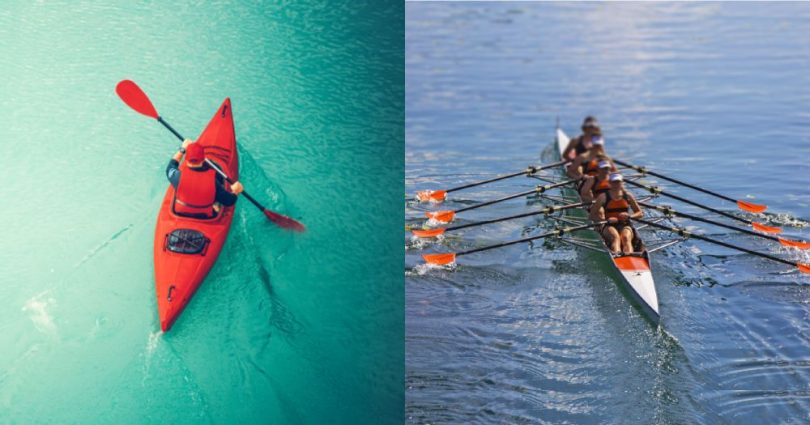




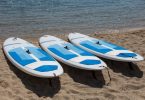

Leave a Comment